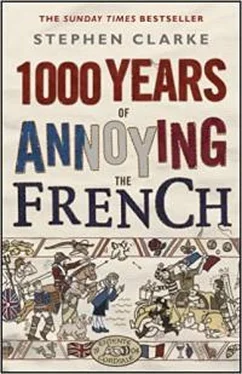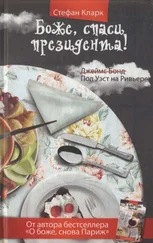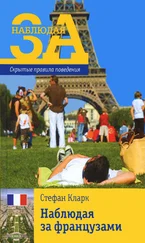Стефан Кларк - 1000 Years of Annoying the French
Здесь есть возможность читать онлайн «Стефан Кларк - 1000 Years of Annoying the French» весь текст электронной книги совершенно бесплатно (целиком полную версию без сокращений). В некоторых случаях можно слушать аудио, скачать через торрент в формате fb2 и присутствует краткое содержание. ISBN: , Издательство: Transworld Digital, Жанр: Старинная литература, на английском языке. Описание произведения, (предисловие) а так же отзывы посетителей доступны на портале библиотеки ЛибКат.
- Название:1000 Years of Annoying the French
- Автор:
- Издательство:Transworld Digital
- Жанр:
- Год:неизвестен
- ISBN:9781407067629
- Рейтинг книги:3 / 5. Голосов: 1
-
Избранное:Добавить в избранное
- Отзывы:
-
Ваша оценка:
- 60
- 1
- 2
- 3
- 4
- 5
1000 Years of Annoying the French: краткое содержание, описание и аннотация
Предлагаем к чтению аннотацию, описание, краткое содержание или предисловие (зависит от того, что написал сам автор книги «1000 Years of Annoying the French»). Если вы не нашли необходимую информацию о книге — напишите в комментариях, мы постараемся отыскать её.
1000 Years of Annoying the French — читать онлайн бесплатно полную книгу (весь текст) целиком
Ниже представлен текст книги, разбитый по страницам. Система сохранения места последней прочитанной страницы, позволяет с удобством читать онлайн бесплатно книгу «1000 Years of Annoying the French», без необходимости каждый раз заново искать на чём Вы остановились. Поставьте закладку, и сможете в любой момент перейти на страницу, на которой закончили чтение.
Интервал:
Закладка:
Understandably peeved, Geoffroy went to England and offered his services to Edward III. More than this, he brought valuable intelligence. According to the chronicler Froissart, Geoffroy told Edward that:
the country of Normandy is one of the richest countries in the world … and if you land there, no one will resist you … There you will find great towns that are not walled, so that your men will make so much booty that they will still be rich twenty years later.
Edward didn’t even pause to ask what the local women looked like – he got together as many ships and men as he could and, on 5 July 1346, they all sailed for Normandy, landing a week later at La Hague, near Cherbourg, which (no doubt in commemoration of the event) France has more recently chosen as the site of a nuclear reprocessing plant.
Edward’s army chevauchée d its bloody way across country, with Geoffroy d’Harcourt himself leading a raiding party of 500 men to do some personal plundering. At Caen, the inhabitants tried to defend themselves by climbing on to their rooftops and throwing down anything they could lay their hands on at the invaders. This so infuriated Edward that he ordered his men to burn the whole town and kill all the inhabitants. After three days of destruction and 3,000 deaths, the army had gathered so much booty that they had to send it downriver to the coast on barges. Soon, ships laden with jewellery, gold and silver plate, furs, richly embroidered clothing and, of course, hostages were sailing back to England.
The French allege that Edward now planned to head for Paris and unseat Philippe VI. If this is true, then his mission failed. But it seems more likely that the English King just wanted to goad the battle-shy Frenchman into fighting. So, after burning the Parisian suburbs of Saint-Cloud and Saint-Germain-en-Laye (both of which, ironically, are now strongholds of the British ex-pat community), Edward turned northeast again and made for Ponthieu, a territory that Philippe had recently confiscated from him. And after crossing the river Somme, the Brits stopped near a small town called Crécy.
Today, the site of the battle of Crécy probably looks much like it did in 1346, apart from a modern house built in one corner of the field, a bit of deforestation, and a small concrete toilet block by the car park. The windmill that stood at the crest of the muddy slope has been replaced by a wooden observation tower, from the top of which you can see … well, more sloping mud. Not that one should scoff at the mud – those are some of the most famous clods in English history.
At the foot of the observation tower there is a rather battered plaque that gives the visitor a short, quintessentially French, description of the battle. It is, basically, a list of excuses for losing – ‘the [French] troops were blinded by the sun, which was shining again’, 4it says, and compares the French cavalry, who had had a long ride to the battlefield, with ‘the [English] bowmen who were refreshed and well prepared’. The mass slaughter of France’s noblest knights is mentioned almost in passing – ‘the French cavalry encountered difficulties and was then defeated’. Yes, being hit by probably the most concentrated shower of arrows ever seen in Europe was just a ‘difficulty’.
Down in Crécy itself, there is a wonderful little museum in the former village school, with an exhibition in two converted classrooms just opposite a line of five outside toilets – four loos with small doors for the children, one with a more discreet full-length door for the teachers.
The guide unlocked each room for my visit – it was a sunny afternoon in the February mid-term break, but no French people seemed to be interested in a history outing – and told me that until 2004 there was no mention of the battle in the museum. It was an archaeological display featuring shards of pottery and lumps of rust that had been excavated from the castle mound. This was the only history that interested the people of the village, apart from the fact that Crécy had been the site of the first launch pads for Nazi V1 doodlebugs. Perhaps the British bombing that knocked out the V1s had blasted the medieval battle from their minds.
Things changed, however, when the charity that runs the museum was taken over by an Englishman, who thought that a small commemoration of Edward III’s victory might be appropriate. And it is the Brits who have provided most of the exhibits – Crécy is a mecca for pretty well every archery club in England and when they come, often in period costume, they bring artefacts with them. Some they donate to the museum, others they leave rather undiplomatically on the battlefield – a metal-tipped arrow, an exact replica of those used in 1346, was recently found embedded near the observation tower, with ‘For Saint George and England’ carved into its shaft. It was removed ‘for safety reasons’.
And the most impressive exhibit in the museum is the case containing similar replicas of the arrows. One thing is for sure – it can’t have been much fun being a French knight on the receiving end of one of these monsters. The shafts are a yard in length, as thick as a thumb, and tipped with metal spikes as long as an index finger. Some have straight, four-sided arrowheads – the ‘bodkins’ that were used to pierce armour – and others have wicked barbs that would slice into a horse’s flesh and send the charger careering away, mad with pain.
At Crécy, there were around 7,000 English longbowmen, who could fire ten arrows a minute with deadly accuracy. In the first sixty seconds of battle, some 70,000 arrows would have fallen on Philippe VI’s front line of troops. It’s hardly surprising that things got off to a bad start for him.
French roads can be hell in August
Before going into the gory details of the battle, it might be a good idea to take in a little more background information.
Edward III, whose troops had just finished their highly profitable chevauchée across the north of France, chose where the battle would take place, and quite understandably picked the best location for himself. His camp was at the top of a long slope, protected on one side by a river and on the other by a thick band of forest.
Edward had a force of between 11,000 and 16,000 men, consisting of the aforementioned archers (both English and Welsh), around 2,000 armoured footsoldiers, 1,500 or so knifemen (that is, dagger-wielding murderers) and a few hundred knights on horseback. His army was much smaller than Philippe’s, but well trained, well positioned and, perhaps most important of all, blooded.
The French had a massive force, with some 15,000 Genoese crossbowmen, 20,000 men-at-arms, several thousand knights on horseback, and untold numbers of peasants wielding rocks, scythes and anything they could find that would enable them to take revenge for the havoc wreaked on their farmland. Philippe also brought along musicians – mainly trumpeters and drummers – to scare the enemy. Even then, French music was known to terrify the English.
It is true that Edward had time to prepare. He organized his troops in an attacking V formation, with men-at-arms in the centre and two wings of archers. The archers went out and dug small holes in the field, designed to put the horses off their stride, or even make them fall over. They also littered the ground with caltraps, large four-sided metal spikes designed to pierce hooves or footsoldiers’ boots. Divisions of the English army were commanded by veterans, including the Norman deserter, Geoffroy d’Harcourt, who was given the task of protecting Edward’s son, the sixteen-year-old Black Prince, about to see his first major action.
After they had made their preparations, Edward III had wine and meat distributed to the troops (fresh supplies had been ‘liberated’ nearby), and then let them rest. The morning of Saturday, 26 August 1346 was, admittedly, quite a relaxing one for the Brits.
Читать дальшеИнтервал:
Закладка:
Похожие книги на «1000 Years of Annoying the French»
Представляем Вашему вниманию похожие книги на «1000 Years of Annoying the French» списком для выбора. Мы отобрали схожую по названию и смыслу литературу в надежде предоставить читателям больше вариантов отыскать новые, интересные, ещё непрочитанные произведения.
Обсуждение, отзывы о книге «1000 Years of Annoying the French» и просто собственные мнения читателей. Оставьте ваши комментарии, напишите, что Вы думаете о произведении, его смысле или главных героях. Укажите что конкретно понравилось, а что нет, и почему Вы так считаете.












